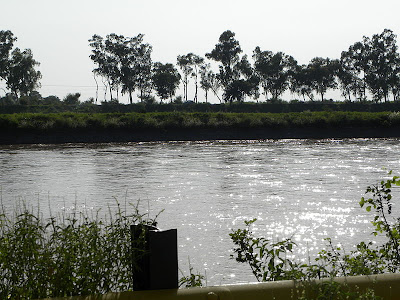Balochistan is located at the south-eastern edge of the Iranian plateau. It strategically bridges the Middle East and Southwest Asia to Central Asia and South Asia and forms the closest oceanic frontage for the land-locked countries of Central Asia.
In terms of geographical size, Balochistan is the largest of the five provinces of Pakistan at 347,190 km² (134,051 mi²), which composes approximately 44% of the total land area of Pakistan. The population density is very low due to the mountainous terrain and scarcity of water. The southern region is known as Makran. The central region is known as Kalat.
The Sulaiman Mountains dominate the northeast corner and the Bolan Pass s a natural route into Afghanistan towards Kandahar, used as a passageway during the British campaigns to Afghanistan. Much of the province south of the Quetta region is sparse desert terrain with pockets of towns mostly near rivers and streams.
The capital, Quetta, is located in the most densely populated district in the northeast of the province. It is situated in a river valley near the border with Afghanistan, with a road to Kandahar in the northwest.
Very cold winters and hot summers characterise the climate of the upper highlands. Winters of the lower highlands vary from extremely cold in Ziarat, Quetta,Kalat, Muslim Baagh and Khanozai the northern districts to mild conditions closer to the Makran coast. Summers are hot and dry, especially the arid zones of Chaghai and Kharan districts. The plain areas are also very hot in summer with temperatures rising as high as 50 °C (122 °F).The highest record breaking temperature of 53 °C (127 °F) has been recorded in Sibi on 26 May 2010. Previously 52 °C (126 °F) has been recorded in sibi. Other hot areas includes, Turbat, and Dalbandin. Winters are mild on the plains with the temperature never falling below the freezing point. The desert climate is characterised by hot and very arid conditions. Occasionally strong windstorms make these areas very inhospitable.


















